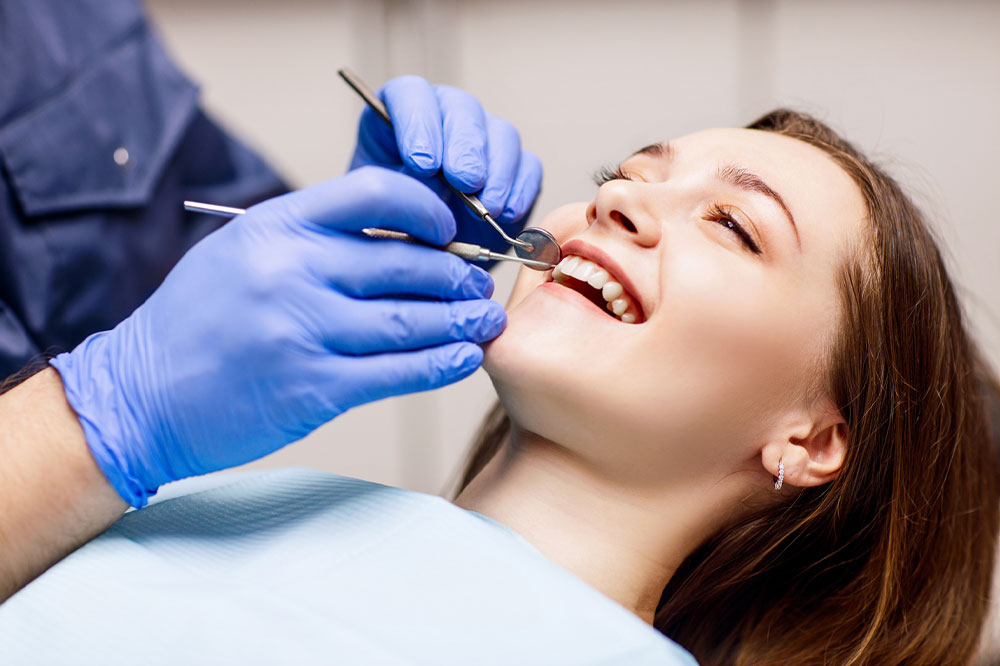
12 Common Signs of Dental Problems
A bright, healthy smile is often a goal for many. While several in-office procedures can help one achieve the perfect smile, it is also important to practice oral hygiene regularly. Without a good dental regimen, one could experience a variety of problems, such as cavities, tooth decay, halitosis, gum disease, and more, leading to severe infections and tooth loss. So, one should keep an eye out for the following common signs of dental problems:
Toothache
Toothache is one of the most common signs of poor oral health. It could develop during the formation of a cavity or be linked to more serious conditions when accompanied by swelling or pus around the tooth or a fever. Until one gets a chance to visit the dentist, rinsing the mouth with warm water and flossing to remove any food particles stuck between the teeth can help alleviate the pain.
Stained teeth
The color of the teeth is determined by a variety of factors, such as food, medical treatments, lifestyle choices, and even physical trauma. To get rid of stains on the teeth and give them a brighter appearance, one can invest in at-home teeth whitening kits, whitening toothpaste, and rinses that help remove surface stains. For long-term whitening solutions, one should consult a dentist.
Cavities
Cavities are one of the most common dental problems. Also known as tooth decay or dental caries, cavities develop when bacteria form plaque on the surface of the teeth. The bacteria feed on the sugar one eats and turn it into acids, which can permanently damage or break down the enamel, reaching the inner layers of the tooth. So, those who opt for excessive amounts of sugar daily are more likely to experience the formation of cavities. Tooth decay can cause toothaches, bad breath, an unpleasant taste in the mouth, and black or brown spots on the teeth. Depending on the location, intensity, and spread, dentists may advise fillings, crowns, root canals, extractions, dental implants, or even dentures.
Gum disease
Bacterial buildup and the formation of plaque in the mouth can also lead to gingivitis or periodontal disease. When dealing with gum disease, one may experience bad breath, sensitivity, and red or swollen gums that bleed easily. Skipping brushing or using poor techniques to clean the teeth can worsen gum health. The condition may also be a result of lifestyle choices, diabetes, or pregnancy. To manage the symptoms, one can visit the dentist for proper teeth cleanup and follow a rigorous dental hygiene routine involving brushing and flossing. When left untreated, it could lead to periodontitis, shrinking and receding gums, loose permanent teeth, a change in bite, and persistent bad breath.
Sensitivity
The erosion of the enamel exposes the dentin, which contains several nerve endings. So, when enamel weakens, one could experience pain or discomfort when consuming hot or cold substances. Tooth sensitivity (or dentin hypersensitivity) could also be a result of gum disease, root infection, cracked or broken tooth, worn-down crown or fillings, a naturally thin enamel, or receding gums. Treatment options may include using special toothpaste or mouthwashes, fluoride treatments, crowns, gum grafts, or a root canal.
Bad breath
This is also among the most common signs of dental problems. Also known as halitosis, it could be a result of poor dental hygiene, dry mouth, medical treatments, infections, acid reflux, or even cancer. Fragrant foods such as garlic and onion could also cause halitosis. As there are several different factors contributing to this issue, one should consult a dentist for a proper diagnosis.
Cracked or broken teeth
Teeth may break or develop cracks due to injuries, trauma (especially from chewing hard foods), mouth piercings, and grinding of teeth during sleep. Depending on the extent of damage, a cracked or broken tooth can contribute to severe pain. Treatment options for a chipped tooth can be veneers, crowns, or tooth-colored fillings.
Receding gums
Receding gums could be triggered by several issues, including poor oral hygiene, brushing too hard, high blood pressure, hormone fluctuations in women, or even unhealthy lifestyle choices. In mild cases, thorough cleanup and regular at-home care can help. Dentists may recommend gum grafts or other surgeries for severe cases.
Root infection
Cavities, cracks, and fractures in the teeth can increase the risk of bacterial infections. This may lead to damaged tissues and nerves and the development of abscesses. One of the most common signs of a root infection is chronic pain, which may be accompanied by sensitivity to hot or cold foods and swelling on one side of the face. Root canals are a likely treatment option for this problem.
Enamel erosion
This condition develops slowly and may leave the teeth looking yellow. It also exposes the dentin, causes extreme sensitivity, and makes the teeth more susceptible to cracks, chips, and breaking. The most common reason for enamel erosion is an excessive intake of sugary and acidic foods such as soda, candies, or sweets. While there is no way to restore lost enamel, limiting sugary and acidic foods and using a toothbrush with softer bristles can help. To improve the appearance of the teeth, one can also opt for dental veneers.
Dry mouth
Dry mouth can affect people of all ages but is common among older adults or those undergoing cancer treatment. People with salivary gland disease, nerve damage, or diabetes may also experience this symptom. To relieve dry mouth, one should have small sips of water throughout the day.
Teeth grinding
Also known as bruxism, this symptom commonly develops when one is asleep. It can lead to teeth damage, jaw pain, headaches, and earaches. Dental conditions that may contribute to bruxism include a new filling or crown that is higher than the other teeth or an abnormal bite. It could also be a result of stress, anxiety, or a sleep disorder. Speaking to the dentist can help one recognize any underlying issues and get appropriate treatment (such as using a mouth guard) to maintain dental health.


